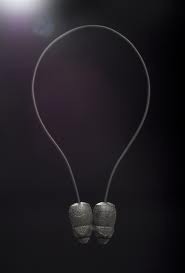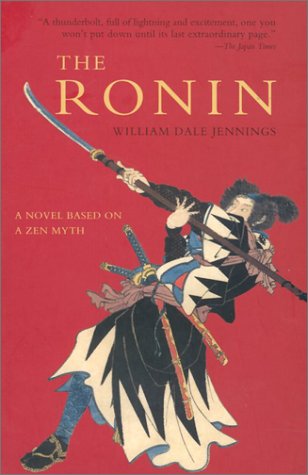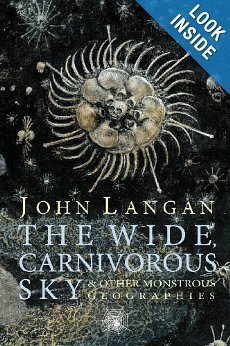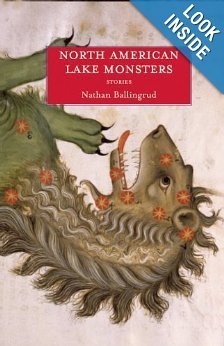Laird Barron's Blog, page 51
August 27, 2013
We were Providence
I drove up to Providence last Thursday for Necronomicon with Bob Waugh and John Langan. It had been a few years since I officially attended a convention. The committee put us up in a suite at the historic Biltmore. Over the weekend, I participated on panels dedicated to Mythos and weird fiction. I conducted readings alongside Joe Pulver, Michael Cisco, Mike Griffin, and Scott Nicolay. I met readers and signed books and got a look at lovely Providence herself. Many thanks to Niels Hobbs and a team of scores and scores for their work putting together one of the best conventions I can recall.

Tom Lynch opening the way
A slew of us sat around the suite each night, drinking scotch and discussing Gilligan’s Island versus Moby Dick, the problematic nature of Lovecraft’s work and how the New Weird is not a thing. Langan and Jack Haringa waxed revelatory, but Selena Chambers was persuaded to not live tweet their indiscretions while Simon Strantzas crossed his arms and shook his head in grim disapproval and Joe Pulver muttered that he’d never die and hunted for his fiddle.
Too much happened and I saw too many friends and colleagues to do the weekend justice. So, I’ll keep it to a minimum. I drank Wathens. I drank Laphraoig. I drank Lagavulin 16. Knob Creek. Nameless whiskey casked in California. Something from a flask that Sandor Silverman handed me. Space Mead. A shot or three from Bob Waugh’s gin store.

Face model for Pears Soap
courtesy Selena Chambers
Then Cisco summoned a byakhee to the roof of the Biltmore and it flapped into the starry void, bearing Strantzas and Richard Gavin insensate in its claws. Back to Canada, I presume. The rest of us polished off the booze and called it a con.
Until 2015.

Cisco persuading us to try his space mead.
courtesy Mike Griffin


August 25, 2013
Returned from Necronomicon
Walked ion off the road a few minutes ago. Necronomicon 2013 was a terrific convention. I’ll talk more about my time in Providence in a day or two. For now–thank you to eveybody who attended my readings and chatted with me over the weekend. It’s among the best con experiences I’ve had over the years, thanks to you guys.
Our room, after hours:


August 20, 2013
David
“i try to keep my conscience clean
i try to keep myself out of your bad dreams
i try to wash my hands for you every night
lest you find my strangling fingers wrapped around tight”
Noah Gunderson


Angry Johnny
In the summer of 2011 I stayed at my brother’s house in the mountains of Montana, a few miles as the crow flies southwest from the town of Lincoln. I spent those months in sequestration. That’s where I wrote “More Dark” and the majority of The Croning. It’s also where I put together a novella about a 1920s mob enforcer named John Cope. Hand of Glory was a kind of therapy. I’d never tried anything quite like it, but had wanted to for a long time. I needed to write a tale about the Roaring 20s, flappers, gansters, Tommy guns, sons versus fathers, and sons versus the ghosts of their fathers, and the occult fucking it all up. It emerged in a white hot blaze over the course of three weeks. As is often the case in matters of serendipity, I embarked upon the journey when I damned well should’ve been doing something else.
I didn’t sleep much that summer; my various deadlines were a real weight upon my shoulders, and during the creation of Cope’s universe, three or four hours a night was a luxury. Ross Lockhart did a hell of a job making the novella presentable, and he wound up soliciting it for The Book of Cthulhu II. A few days ago, it was nominated for one of the major awards in our genre, and considering Johnny Cope’s provenance, it’s an unlikely and amazing outcome.
Here’s a little something I put together at the time in celebration of completing Hand of Glory.
Meet Johnny Cope, enforcer for the Arden family of c. 1920s Olympia, WA.
This is Johnny at work:
This is Johnny’s Chicago Typewriter:

When Johnny runs low on ammo he reaches for this little honey:

Johnny took piano lessons as a boy:

This is Johnny’s girl:

This is what Johnny drinks:

This is what Johnny smokes:

This is what Johnny Drives:

This is where Johnny lives:

Johnny is going to pay his respects to the boss of Ransom Hollow. Good luck, Johnny.



August 19, 2013
The Ronin
An old review unearthed:
One of the great classics is an old book by William Dale Jennings called The Ronin. The Ronin is a bastard of the first water, raping, murdering, and pillaging across the land. There is a section in the book where a boy, a spoiled prince, is essentially orphaned by the ronin and determines his life’s work shall be revenge. The boy goes into the mountains and bursts in upon a retired sword master as the old man meditates in preparation for the day. The master ignores the brash child, but after a day and a night relents upon hearing the reason the boy wishes to receive training. Seven years of gruelling hardship and privation for a single duel. What follows is an epic account of master and pupil and the relentless and brutal training required to forge the child into the greatest swordsman in Japan.
Seven years pass. The boy spends two years chopping wood and hauling water and learning to read and write. Then two more years fulfilling these tasks whilst being randomly ambushed and savagely thrashed by the sensei. Then three more, slowly, painfully mastering the art of the bamboo practice stick, and finally the sword. It is a heartbreaking and joyous story within a story, freighted with so many unspoken things, and a melancholy sweetness and sense of devotion to the larger world that lies at the heart of true masculinity.
This book is very important to me.
The section dealing with the young man’s time of tribulation ends with this passage:
“An hour later he was gone, leaving this note behind: ‘My parents made me a child. My teacher made me a man.’ There was a long, thoughtful space, then these words: Nor does the severed limb cease to be part of the tree.’
The old man read it, carefully folded it and placed it upon the fire. Then he placed his bamboo practice stick upon the flames, watched it burn and rose to finish what he’d been doing the day the child arrived.”
—William Dale Jennings


Interview at Twisted Tales

Thank you to David McWilliam for the opportunity to discuss the Year’s Best Weird Fiction at Twisted Tales.


August 18, 2013
21st Century Ghosts

A short essay I wrote for LOCUS a few years ago; reprinted for the first time. A handful of authors received the assignment to discuss the state of modern horror. Here’s my take circa 2007.
Twenty-First Century Ghosts
by Laird Barron
Short, dark fiction is close to my heart. I encountered Michael Shea’s The Autopsy as a teenager and it was the first horror story to really scare the hell out of me. I didn’t fully grasp its significance then, couldn’t fully take the measure of his work any more than the blind men could hope to make sense of the elephant. Such appreciation was impossible for a seventeen year old kid, especially a kid who’d been weaned on modern pulps and bad cinema — nonetheless, the power of Shea’s vision was undeniable, and it shook me. This was the latter 1980s when bookstore shelves were hemorrhaging slasher fiction and the latest vampire retreads — the salad days of affect horror. On the day I found a copy of David Hartwell’s The Dark Descent, which featured Shea’s novella and a number of other classics, everything changed. I’d tasted literary horror and once that got into my blood, I was ruined for anything less substantial than the pure stuff. Shea’s dark masterwork remains etched upon my sensibilities as the ultimate example of how a storyteller may capture our wildest, bleakest, most fearful imaginings and bend them to the service of something far greater than an impulse toward the coarse and coarsely visceral. Perhaps more importantly, he demonstrated it was possible to dust off among the hoariest of genre tropes, demonic possession in this case, and transcend it utterly. This feat in itself is a metaphor for the highest quality work accomplished today.
Seven years into the new millennium and the big black carousel has
swung full circle. Horror may never again experience the boom that heralded the Golden Era of the 1970s and early 1980s, but it’s definitely recovering from lean times. The short fiction field is especially resurgent, and its future more assured than it has been in many years. I remark upon this resurgence with such confidence because even the most cursory examination of this decade’s finer work reveals a level of craft that hearkens to models established by the original giants of the canon. The key to the best, most enduring fiction, what truly elevates literary horror above mere affect, lies in a combination of elements, not the least of these an authorial intent to establish a reciprocal relationship with his or her readers, something more profound, something more resonant than a cheap thrill, or transient frisson. This sense of reciprocity was ever prevalent in the works of Shea and his peers, and is equally prevalent among the ranks of authors who represent the leading edge of the genre in 2007.
This leading edge is comprised of an eclectic array of seasoned veterans and relative newcomers. Jeffrey Ford’s Empire of Ice Cream, Terry Dowling’s Basic Black, and William Browning Spencer’s The Ocean and All Its Devices stand as significant recent collections penned by long established authors. Other stalwarts of the short medium, such as Lucius Shepard, Gary Braunbeck, and Joyce Carol Oates show no signs of fading from the scene. Further, a new generation has begun to emerge through independent presses and genre magazines. My faith in the future of short horror fiction is strong because as I read story after story, and collection after collection penned by a host of rising stars, I readily discern character traits of a venerable lineage, and echoes of historic greatness. Caitlin Kiernan’s To Charles Fort, with Love, Joe Hill’s Twentieth Century Ghosts, Margo Lanagan’s surreal and haunting Black Juice, and Conrad Williams’ gritty, phantasmagoric tour de force Use Once, Then Destroy, are of the highest caliber short story collections in recent memory, and arguably the equals of anything that’s appeared over the past thirty years. Literary acumen, attention to character, setting, and plot, are hallmarks shared by the younger standard bearers of the current era. It seems apparent the legacy of writers such as Jackson, Grant, Klein, Straub, and Shea himself have come to fruition in the talents of contemporary authors including, but certainly not limited to, Nathan Ballingrud, Kelly Link, Paul Tremblay, John Langan, Darren Speegle, Mary Rickert, and Elizabeth Bear. These, among a score of others, spring to mind as literary scions of those latter day masters who comprised the original vanguard of the horror genre. Here is a generation cognizant of its roots, one that collectively demonstrates respect for history and tradition, yet is unafraid to re-imagine the architecture of the weird tale and build upon its foundation.
Recalling now that sense of dread wonder and amazement engendered by The Autopsy, I can only envy those who are yet to experience it for the first time. Doubtless twenty years from now a kid will crack open a novella by Matt Cardin or Glen Hirshberg and find himself poleaxed as I was upon discovering Shea. I don’t think the literature of the weird, the canon horrific, could be in better hands.


August 16, 2013
Review: Street Raised by Pearce Hansen
I’m consolidating things onto this site, so here is a review I first ran on my LJ a couple of years ago.
There is a peculiar synergy between noir, crime fiction, and horror. It wouldn’t surprise me, were I to analyze it more thoroughly, that John D. MacDonald, Donald Westlake, and Robert Parker tales of hard boiled modern day knights, treacherous scoundrels, and sloe-eyed vamps and the assorted skullduggery sum and sundry found themselves enmeshed within had as much or more to do with my becoming a horror writer than the bloody works of King or Barker.
Nonetheless, some crime fiction cuts a hell of a lot closer to the bone than others, a good example being the raw and somewhat horrific exploits of narcoleptic PI Mark Genevich in The Little Sleep and No Sleep Till Wonderland by Paul Tremblay.
More recently, I got into a book called Street Raised by Pearce Hansen. This novel is a beautiful and horrifying proposition. Hansen’s writing evokes an almost paralyzing aura of authenticity. His description of prison life and the life of a brutal con after he’s been turned back out onto the street, or “raised,” following a stint of hard time, is neither for the weak-kneed nor the prudish. Hansen’s depiction of human predatory wildlife is sharp, yet neither glorifies nor condemns its subject. More like he’s simply clicked on the camera and the secret microphone and allows nature to take its course. All told, this novel in following the grim and all too human exploits of an eclectic cast of thugs, murderous drug dealers, kamikaze bouncers, phone psychics with hearts of gold, and, most prominently, the freshly raised Speedy as that urban prowler returns to his Bay area hunting grounds, contains more bloody darkness in one pinky than ten times its weight in typical category horror fare. I’m one jaded fella when it comes to shocks in literature, and I was gratified at how many moments Street Raised raised my hackles or caused me to reread a paragraph because I couldn’t quite accept that I’d seen what I’d seen. Hansen’s delivery is nothing like Cormac McCarthy’s, but this novel possessed a few visceral and nasty surprises that put it in the same territory of viciousness and macabre grandeur as Blood Meridian.
As I said in a previous post, there is something of Michael Shea’s street beat poetics in Hansen’s rhythmic prose, and maybe a tab or two of whatever psychedelic Cody Goodfellow mixes into his morning joe, and maybe even a slight hint of what it would look like if Wambaugh stopped giving a rat’s ass about anyone else in the entire world, hitched up his suspenders, spit into his cupped palms, and then grabbed an axe and started in with blood in his eye.


August 15, 2013
Summer reading
I’m in the middle of reading for the inaugural Year’s Best Weird Fiction, which is well on its way to being funded by Indiegogo with one month left.
Meanwhile, this has been the year of the collection. My recommendations for two of the best writers in the traditions of horror and the weird:
The Wide Carnivorous Sky
by John Langan
and North American Lake Monsters by Nathan Ballingrud


August 14, 2013
Necronomicon bound
I’ll be attending Necronomicon as a special literary guest next week with my friends John Langan and Robert Waugh. I think the organizers are still tinkering with the schedule, but I’m slated for several panels and a reading. It’s an honor to attend. Providence is a great town and I look forward to seeing many of my friends and colleagues. And to drinking lots of scotch, of course.






![wh9[1]](https://i.gr-assets.com/images/S/compressed.photo.goodreads.com/hostedimages/1381144740i/4364334._SY540_.jpg)



